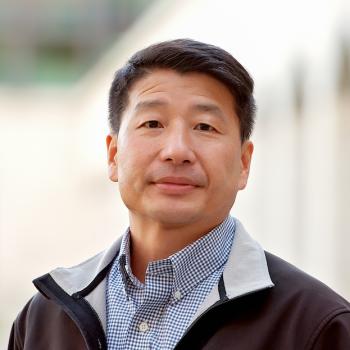Current Research and Scholarly Interests
Cardiovascular Developmental Biology
A major focus of the Wu Laboratory is to define the earliest steps in heart formation. We use experimentally-modified mice as our live model to take advantage of a broad range of molecular tools available. The similarity between a mouse heart and a human heart allows us to connect our results directly into finding ways to treat human heart diseases. We seek to understand what genes are responsible for making the heart chamber form in the right way. We are also interested in finding out what disturbances in the normal process of heart formation is responsible for devastating congenital heart diseases that lead to fetal demise or death shortly after birth. We have utilized the most state-of-the-art tools to try to understand the process of normal heart formation and have made significant discoveries in this area of research.
Cardiovascular Tissue Engineering
We have recently embarked on cardiac tissue engineering work due to the significant promise of this research direction in creating functional cardiac tissue for modeling of heart diseases and for generation a new organ that may be transplantable. By using stem cells that can be turned into cardiac cells, we have brought stem cell biology and tissue engineering together to begin making true functional heart tissue for screening drugs to treat heart diseases and to build new replacement tissues that may one day be used to replace the damaged heart muscle after heart attack. We have actively collaborated with material science engineers, vascular engineers, and mechanical engineers to make new discoveries in this research area. We currently employ 3D bioprinting as a tool to generate full-thickness, vascularized, and functional cardiac tissue.
Cardiovascular Disease Modeling
While mouse models are useful for studying the process of heart formation, they are not exactly like the human hearts in various ways. Since we cannot easily obtain human heart tissue, we have chosen to use stem cells as the next best source of material to study human heart formation and disease onset. We focus on a special type of stem cells call induced pluripotent stem cells (iPSCs) that behave exactly like embryonic stem cells but are made from regular human skin or blood cell. These human iPSCs make excellent model of heart formation inside a petri dish in the lab and can be turned into beating heart muscle cells by treating them with special factors. Furthermore, the steps that these iPSCs take to become heart muscle cells replicate exactly the way a human fetus goes through during early development in utero.
Cardiovascular Regenerative Biology
Ultimately, our work in developmental biology and tissue engineering seek to identify the most effective way to treat damage hearts. The regenerative potentials of stem cells is unlimited but requires careful guidance when given to a patient with heart disease. Many efforts that have failed in the past is due to the lack of understanding of what stem cells are capable of doing to treat damaged hearts. We have studied the role of stem cells in a fetal heart injury and recovery model (Sturzu et al, Circulation 2015) and have addressed the challenges that must be overcome in order to move the field forward (Wu et al, Cell 2008). We are currently seeking to find new cell types that may be useful for repairing damages to the muscle and the conduction system (i.e. the electrical network) in the heart using human iPSC-derived cells. In the future, we seek to generate transplantable organs using innovative strategies that involve tissue engineering and interspecies chimerism with pluripotent stem cells.


